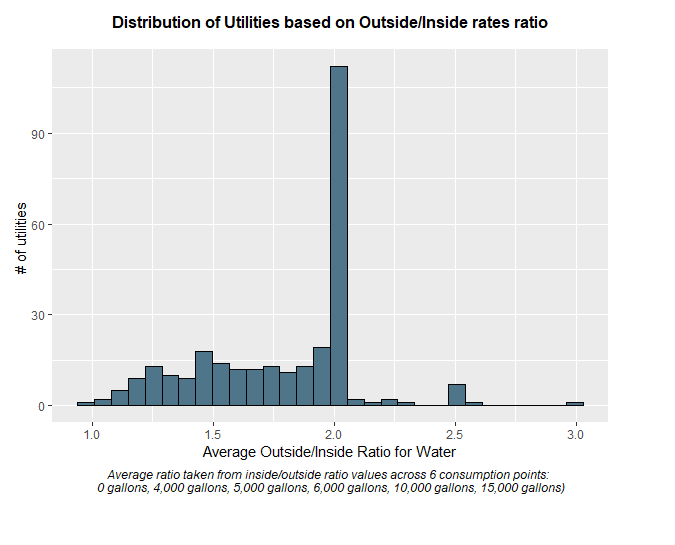
Water and sewer utilities have a responsibility to develop a system to serve all customers within their jurisdictional boundaries, but outside customers live outside that political jurisdiction. There is a lot of discourse concerning the justification of charging higher prices to outside customers. But how do utilities structure these separate charges and what exactly are the reasons behind them?
Outside customers have a different relationship with water and sewer providers than inside customers. Not only do inside customers unequivocally receive services, but they can also express their pleasure or displeasure with utility rate setting by voting in their city and town council elections. Outside customers do not have that same political representation and cannot compel utilities to change rates or provide services at all. Further, they cannot challenge the utilities in court if it is not within their original agreement or contract. Any services provided to outside customers are voluntary and therefore utilities can provide services for a profit.[1]
Given the voluntary nature of the relationship, utilities seem to prefer simplicity when setting rates for outside customers. The most common method for determining the cost of utility services for outside customers is applying a multiplier to the inside rates. This approach may or may not result in rates that are proportional to the utility’s cost to serve outside customers, which has historically opened the door to legal challenges. Another common approach is charging outside customers a rate proportional to the cost to serve them. This method includes a true cost comparison of supplying environmental services to nonresident customers compared to resident customers. For some utilities, applying a rate of return to outside rates may be a large portion of their revenue. A rate of return is common for utilities using either method. The numerous challenges that utilities face when providing services and setting rates for nonresidents are often cited as reasons to charge higher rates. What makes providing utility services to outside customers more expensive?
- Infrastructure costs per connection are higher for outside customers. Outside development is typically less dense than inside development. Less dense development means greater infrastructure needs per connection and thus higher costs. Utilities may also have higher energy costs associated with pumps and lift stations needed to serve outside development.
- Outside customers may have different water use patterns such as increased irrigation demand.
- Outside customers do not pay taxes within the utility’s jurisdiction. Even if a utility’s enterprise fund is completely independent and not subsidized by the general fund, general fund revenues can often subsidize utility operations in indirect ways including local government purchase of utility services and shared staffing.
Spotlight: Outside Rates in NC
North Carolina legislature authorizes—but does not require—units of governments to provide services to customers lying on the outside of city limits. They also can charge separate and unique rates to outside customers. Most government water (71 percent) and sewer (69 percent) providers charge separate rates to nonresidents for services. Many utilities in NC have chosen to charge higher rates to nonresident customers, but how much more are they paying?
The distribution of the average ratio among utilities that provide services to nonresidents shows that many utilities may prescribe to the multiplier approach when calculating rates charged to outside customers. More than 24 percent of utilities that charge outside rates charge double that of inside rates for water.
Utilities may employ financial analysis to develop an outside cost ratio based on cost-based principles. For utilities that would like assistance with financial analysis or direct assistance, please see our page for technical assistance and how we can assist your community.
[1] For a more in-depth legal analysis of outside rates, see Kara A. Millonzi’s report on Lawful Discrimination In Utility Ratemaking.


